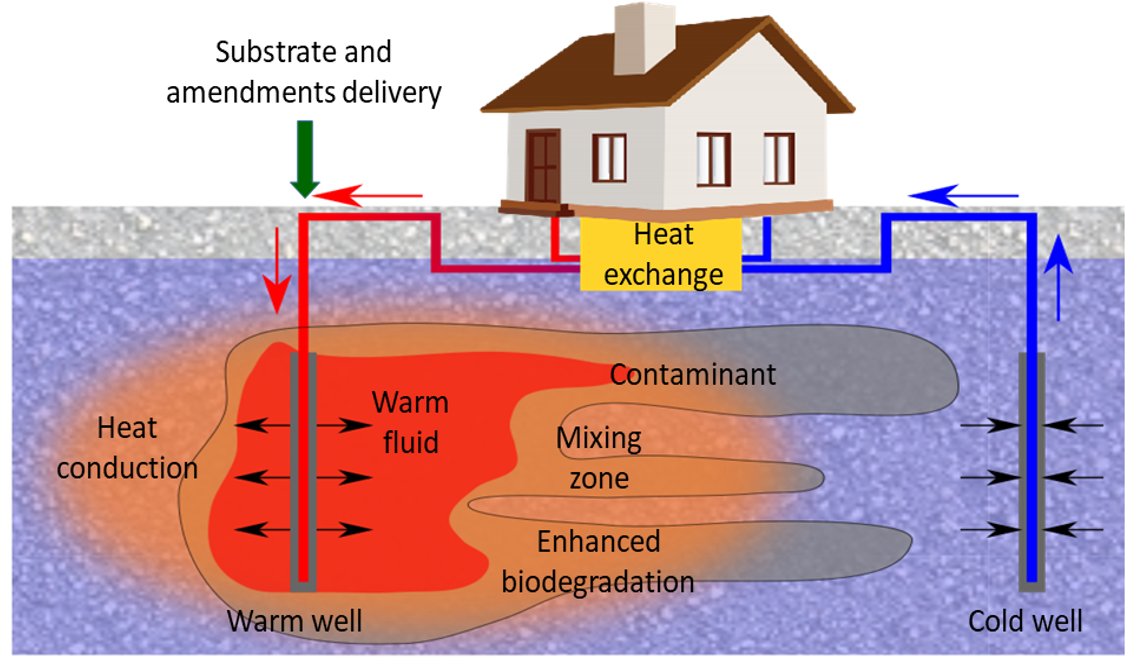A new project aims to develop a model for using groundwater to heat and cool buildings while the water is at the same time cleansed of pollutants that pose a risk to drinking water.
It almost sounds too good to be true. Nevertheless, there are high expectations for a starting project that will combine two different technologies to ensure sustainable heating and purification of contaminated water.
One of the technologies that will be investigated uses groundwater to cool and heat buildings. In an Aquifer Thermal Energy Storage (ATES) plant, cold groundwater is pumped up in the summer and used to cool buildings. The water absorbs the heat of the buildings via a heat exchanger and is subsequently stored in underground aquifers. As much as 80 per cent of the stored energy can then be used to heat the buildings during the cold winter months.In the Netherlands in particular, there are many ATES plants, and the geological conditions in Denmark imply that there is a great deal of untapped potential for this type of installation here.
However, a challenge when it comes to using the technology on a wide scale is that the groundwater, especially near cities, can contain pollutants from past industrial activities, factories, petrol stations and the like. The new project will therefore combine groundwater heating with biotechnology that clean the water in situ. This is done by means of biodegradation of pollutants, which is more effective when it occurs at high temperatures.
The first step is a sound scientific basis
To apply this combination of the two technologies in the real world, there must first be a scientific basis in the form of a new research project.
"The first step will be to study the operational conditions and temperatures that best promote the biological degradation of the pollutants. Then we'll develop a model integrating the governing physical and biogeochemical processes, that will be the basis for design and practical implementation of the two technologies," says Massimo Rolle of DTU Environment, who is heading the project.
A key part of the researchers' work is to understand water flow as well as solute and heat transport, so that the use of groundwater for cooling and heating does not cause the pollutants to further spread in the groundwater and threaten potential receptors (e.g., drinking water supply systems).
The work will start with laboratory experiments, where the conditions of biological degradation and groundwater remediation can be controlled and analysed in detail. The researchers will then develop a numerical model integrating the governing processes and necessary data for combined energy storage and groundwater remediation.
The Capital Region of Denmark is involved in the project and will provide a unique dataset from a small pilot project which, for the first time in Denmark, has combined the two technologies on a contaminated site. This data is essential both for the model development and for scaling up the technology and subsequently applying it in different locations.
The project is called 'BiodegrATES - In situ contaminant Biodegradation meets Aquifer Thermal Energy Storage'. It is supported by Independent Research Fund Denmark and will take three years to complete.







